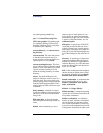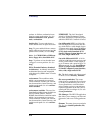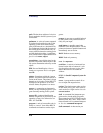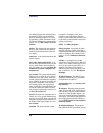
212
Glossary
stations. A diskless workstation boots
from its partner workstation. See also
disked workstation, node, partner
node, workstation.
double click To press and release a
mouse button twice in rapid succession.
drag To press and hold down a mouse
button while moving the mouse (and the
pointer on the screen). See also drop.
drive See CD-ROM drive, DDS tape
drive, floppy drive, hard disk drive.
drop To release an icon that has been
“dragged” to a new position. See also
drag.
EISA (Extended Industry Standard
Architecture) An industry standard bus
architecture based on and compatible
with that used by IBM in their AT series
computers.
environment The conditions under
which your commands are executed.
These conditions include your worksta-
tion characteristics, home directory, and
default search paths. See also environ-
ment variables.
environment variables The set of de-
fined shell variables (some of which are
PATH, TERM, SHELL, EXINIT,
HOME) that define the conditions under
which your commands are executed.
These conditions include your worksta-
tion characteristics, home directory, and
default search paths. See also environ-
ment.
ETHERNET The LAN developed
jointly by Digital Equipment Corpora-
tion, Intel, and Xerox Corporation, upon
which the IEEE 802.3 network is based.
fast, differential SCSI An 8-bit wide
bus with high-power receivers and driv-
ers, which allows a cable length of up to
25 meters and a speed of up to 10 MB per
second. See also fast-wide differential
SCSI, single-ended standard SCSI,
Small Computer System Interface, ul-
tra, wide, single-ended SCSI.
fast-wide differential SCSI A 16-bit
wide bus with high-power receivers and
drivers, which allows a cable length of
up to 25 meters and a speed of up to 20
MB per second. See also fast, differen-
tial SCSI, single-ended standard SC-
SI, Small Computer System Interface,
ultra, wide, single-ended SCSI.
file The basic named unit of data stored
on disk. See also directory, filename.
file access permissions The access
rights given to a particular file or directo-
ry. Every file and directory has a set of
access permissions, a code that deter-
mines whether a process can perform a
requested operation on the file (such as
opening the file or writing to it). See also
access permissions.
File Manager The HP VUE application
that allows you to manage your files and
directories, and to set viewing preferenc-
es.
filename The name given to a particular
file. See also absolute pathname, file,
pathname.


















